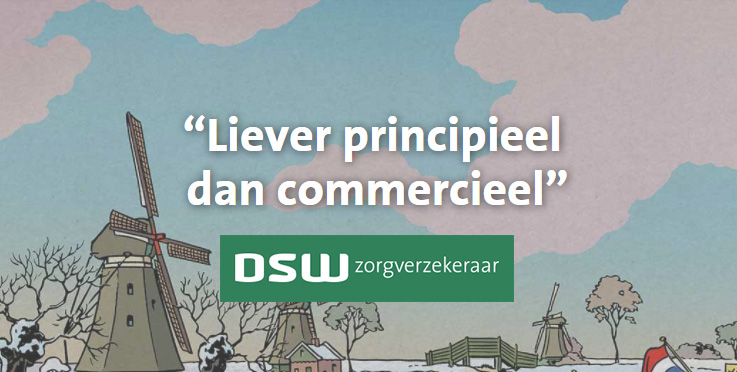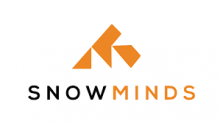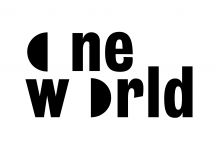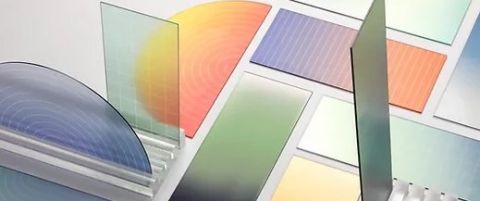- 1. Principles of Powerful Writing
- 2. Plagiarism
- 3. Reporting: Opening Parts
- 4. Reporting: Main body
- 5. Reporting: Final Parts
- 6. Argumentation
- 7. Rewriting
- 8. Style: Common Errors
- 9. Style: Phrasing Problems
- 10. Spelling: Common Errors
- 11. Quoting and Paraphrasing
- 12. References
- 13. Abbreviations and Acronyms
- 14. Tables, Figures and Boxes
- . Bibliography
- 16. Layout
1. Principles of Powerful Writing
Before you start writing you should have an idea of the output you are aiming for. Some rules of writing: 1. Think, 2. Powerful writing is rewriting, 3. Take sufficient time for brainstorming, 4. Be consistent, 5. Powerful writing requires managing different roles, 6. The occasion defines the most appropriate writing form, 7. Avoid plagiarism, 8. Reveal sources, 9. Easy reading is hard writing, 10. Contents and writing skills are complementary to each other.
1. Inventory (brainstorming)
You write anything that comes into your mind. The function of this phase is to provide space to write down everything about the problem.
2. Structure (norming)
It requires read and judge to have powerful writing. The more structured you have worked during the inventory phase the easier this phase. Minimum requirement of academic writing is mastering basic grammar with correct use and revelation of sources.
3. Formulation (performing)
Rewriting is important. It is necessary to do this to ensure quality report.
4. Editing
Editing requires separate state of mind. Editor check for three aspects: 1. Logic, 2. Readability, 3. Layout. Editing can take several rounds of rereading and rewriting.
2. Plagiarism
Plagiarism is increasingly become serious phenomenon. Acknowledging your sources are important to increase your credibility
What is plagiarism?
Copying somebody else’s paper and delivering it as your own
Literally copying large part of somebody else’s text with or without referencing
Copying paragraph or sentence without quotes
Copying with some changes in words with or without references
Writing down a paragraph or sentence while it is not clear whose work it is.
Copying somebody else’s text with incorrect sources.
What is not plagiarism?
Writing down common knowledge
Quoting of quantitative data with source place directly
Quoting a number of sentences from another author with proper reference to the author
Paraphrasing with reference.
Causes of plagiarism
It is easy to copy somebody else’s work with the rise of computer and internet
Many online firms offer papers against payment
The person does not know precisely what is right or wrong.
How to avoid plagiarism?
Paraphrase
Quote only a brief paragraph
Include correct references
Collect few similar text and write down the comparisons
Do not make yourself responsible for judgements of others
Do not accept any excuses to commit plagiarism.
3. Reporting: Opening Parts
Standard reporting consist of title page table of contents, acknowledgement and introduction with some other optional parts
A title page (of a research report) includes:
A clear and informative title and descriptive subtitle
Full name of authors in alphabetical sequence
Place and date
Name of supervisor
Institutional affiliation
A Table of contents includes:
A typographical formula revealing the structure
All introductory components following the table of contents
All part titles in capital letters and bold print
All chapter titles and sections that are numbered
All closing components with page indication
A Preface/Acknowledgement includes:
A short explanation stating why this research is of interest
A brief reference to the scientific discourse that relates to this piece of work
A list of the people you have cooperated
A ‘thank you’ line for your supervisor? It can be counter-productive.
‘I’ form can be use instead of we
Name, place and month/year at the end
n shorter article acknowledgement can contain your background else well.
An Introduction includes:
Basic research question and research aims
A longer explanation of the background of your question
An explanation of the methodology
Outline of parts/chapters
Guidance for different types of readers
No announcement of a conclusion/summary
A statement concerning all of the relevant choice
Some definition is necessary
Layout opening components
Some minimum requirements: 1. Title page, 2. Table of content, 3. Preface/acknowledgement, 4. introduction
4. Reporting: Main body
User-friendliness = Readability
Firstly, state what is the main message
Always organise text according to an increasing degree of specificity
Assist the reader with summaries ad intelligent headings
Purposeful chapters and sections
Refer to the content of the last section
State what is discussed in the section itself
Make clear why you have chosen this particular sequence
Think about a ‘catchy’ first line that attracts the attention of the reader
Conclusive chapter and sections
Always give a brief summary of a chapter and a longer section
Never add material/information to the presentation in your concluding statement
Think about the nature of your last line
Paragraphs
Paragraph are not sections
A paragraph indicates a separate element in your text
Focused opening lines enable readers to grasp your message quickly
5. Reporting: Final Parts
Minimum requirement: conclusions and biography with some optional such as epilogue and glossary
Conclusion
Conclusion always repeats the research questions
After summarising, write the well-structured answer to the question
Final conclusion considers the flaws in your research methodology or other problems
A conclusion never adds new information
The conclusion ends with a good last line
Conclusion specify recommendations for further research
Epilogue
It is mainly used when new information has appeared between time of finishing the main transcript and going to the supervisor
Glossary
It contains concepts and a short description of their meaning. It is not a complement of the text. Try to refrain from composing a glossary
Annexes
You put an explanation, data and tables in an annex:
When the information can be summarised easily in the text
When it only contains background information
When you need to explain of methodology
Always includes the full questionnaire
Some rules of annex:
Stand on its feet
Write annex only when you have referred to it in the text
Give annexes a number
Limit the number
Number the pages of the annexes as ongoing pages
Bibliography
Index
It contains the most important concepts and names and reveals the location in the text by page number. It is a good idea to write index as it might help to consider the keywords that are most relevant to your type of research.
6. Argumentation
Argumentation = dull
Scientific text is transparent, predictable and relatively dull. You specify everything beforehand
Characteristics of good and bad argumentation
Good: clarity, succinctness, simplicity, precision
Bad: ambiguity, lengthiness, unnecessary use of complete vocabulary, inaccuracy
Pro and con arguments
A good method of arguing is by systematically trying to list arguments ‘in favour’ and ‘against’ an observation.
If there are many convincing arguments, it indicates the overall argument might be true
If more against, it indicates that you should not support the observation
Some argument can be more important than others
If the number of pros and cons are the same, think of the conditions where each prevails
Schematising your argumentation
Schematising is the use of table and logic tree to argue
Definitions
Clear, succinct
Non-circular
Content specific
Explicit on main points and side issues
Fallacies in argumentation
Some common fallacies in argumentation:
The use of authority and big names
Use of normative adjectives
Use of normative assessments
Improper deductions
Strengths and weaknesses
It is better to make an inventory and then make a selection from an overall view than on the basis of partial argumentation
Necessary and/or sufficient condition?
Two conditions are whether it is necessary or sufficient. The strongest type of argument is when it is necessary and also sufficient
7. Rewriting
Your writing should be clear, succinct, simple and precise.
Powerful writing requires a particular state of mind...
Vices and virtues in attitudes to writing
Vices: self-satisfaction, disdain, rigidity and resistance to working more rationally
Virtues: self-criticism, empathy, professionalism, systematic and reflexivity
...Which changes over time
Two problems can appear if you lack the mental state to separate writing texts from reading:
Many people have difficulty correcting their own writing
If you try to correct it on-screen you lose the overview of all the components
8. Style: Common Errors
Reification
It means attaching personal characteristics to a organisation or institutions. It often error in style but may also indicate error in interpretation as well.
Passive instead of active phrasing
Passive writing tends to be heavy and unfavourable in writing.
Long instead of short sentences
Lengthy sentences are usually unnecessary and weaken argument
Abusing brackets and quotation marks
Try not to have more than two or three remarks in brackets per page
Most statements in bracket can be written in a separate sentence
Abuse of footnotes
Footnotes are often abused to elaborate on certain additional points that are excluded from the text. Exception to this:
When referencing to interviews
When referring to ad internet source
When you aim at different audiences
Unspecific time indication
Be specific in timing issue and always be positive
Unclear or ambiguous indications
Use name correctly to ensure no ambiguities
Gender-specific language
Avoid using this language since it is more appropriate to use alternatives
Writing in another language
If you write in another language make sure you are sufficiently fluent in that language
9. Style: Phrasing Problems
It sometimes better to avoid using some words such as these:
‘Having said this': you are writing not talking
‘Thus.., therefore’: conclusion does not have to be announced
‘In short’: so before you couldn’t formulate your argument in a more concise way
10. Spelling: Common Errors
1. Time indication
You can use slash to indicate a financial or academic year
You can abbreviate months when used in tables and footnotes
2. Numerals
Generally spell the numbers. Nevertheless for more tedious one numeral can be used
Be aware of punctuation differences
3. Common spelling errors for non-native English speakers
Non-native speaker sometimes try to link words wrongly or wrong usage of hyphen. English nevertheless has used some compound words as well
4. Typos and spell checkers
Typographical errors are irritating and decrease the credibility of the text. Be aware of the difference between American and British English
5. Authentic foreign keywords
Explain the first time they appear
Does not apply for company names
Consistency in spelling
Anglicised names
Consistency in names is important
Listing common words
In order to avoid lengthy and tedious spelling checks, start by making a short list of the words that you are likely to use often. Also decide upon your preferred spelling.
11. Quoting and Paraphrasing
Three dimensions of correct quotation: 1. The difference between direct quotation and paraphrasing, 2. How to reproduce the text and 3. When and how to add changes to a quote
Direct quotations
A few words: Put this in single quotation marks and use a comma to separate your own introductory phrase
A short quotations: use a colon to introduce smaller quotations
Longer quotations: usually indented and separated from the main text. Some publishers leave out quotation marks for these indented quotes
Consecutive quotations: it is necessary to indicate source of each in a separate reference
Paraphrasing
You reproduce substantially the form and combination of ideas taken from another source but put it in your own words.
Referring to sources is even necessary if you adopt line of reasoning, idea, phrase and even a word from someone else
Abstain from paraphrasing an argument that has been paraphrased by someone else
Never paraphrase an indirect source while referring to the original source
When paraphrasing a list of points, includes the source and introductory sentence
Sources for quotations
Secondary sources: looks for the original sources and quote properly.
Interviews: no direct quotation from interviewee. When referencing, try to accommodate privacy of the interviewee
Changing quotes?
Original spelling: do not change original spelling. Insert parentheses when you omit something from direct excerpt. Add bracket if you change the word form
Double/single quotations: depends on your style. Use double when you want to emphasise that in the original excerpt one word gets quoted.
Add emphasis: state emphasis added whenever you underline or italics some words in the quotation.
12. References
Also refer to your source. Reference and bibliography should enable reader to 1. Return to the original sources, 2.show the reader where you got the information from, 3. Enter into a more fruitful discussion
Reference systems
Harvard reference system: it gives a shortened reference in the text and a full reference in bibliography
Note reference system: it gives the reference in a note at the bottom of a page. Do not use end-notes, no abbreviation if possible.
Reference types
General referencing: if you mention a general message in the writing of other, it is sufficient to mention the author and the year of publication. For newspaper and magazine, it is better to use date than the number of edition.
Argument reference: it should follow that the more specific you use the work of other the more specific the reference will be.
Internet references: always reveal the complete source as well as the date consulted, directly mention the article instead of the complete website address (for article), and refer to the author if you know the writer.
13. Abbreviations and Acronyms
1. Abbreviations: When to avoid them
A reader will not automatically know what you mean by an abbreviation
It is better to spell abbreviations in full the first time and repeat the abbreviations during a longer text
The meaning of abbreviations can be completely different in different language
Write in full, do not use contracted form
Readers think of different meanings with common abbreviations of Latin expressions in scientific texts.
2. Abbreviations: How to use them correctly
Abbreviation job titles: it is recommended to check national spelling as it differs from country to country
International system of measurement: usually written in lower case
Currency indications: currency abbreviation should always be preceded by the currency indication. Spell the currency if you are unsure that the reader understands.
Nationally used abbreviations: usage of some nationally used abbreviation is allowed even in English language like status of companies
Abbreviation with or without full stop: it is dropped in international system of measurement and in some language for personal indication. Most abbreviation uses no full stop. Full stop added in abbreviation of countries and cities and according to convention
Economise on space: table, boxes and figures: you can use more abbreviation in tables, boxes and figure but you need to explain the meaning.
14. Tables, Figures and Boxes
1. Main aspects tables/figures/boxes
The status: always identify the source accurately, no source indication means it is your own invention
The aim: it contains a clear heading/ title that reveals the topic, the place and the time frame.
The main contents: distinguish column and row indicators, includes a legend and under the table includes explanations
Figures, tables and boxes should be a support for the text but it should stand on its own.
2. Qualitative tables
Table consist of summarise of your own argument and other people’s argument.
3. Layout: tables and figures
Always spell figure and table in full
Number tables and figures preferably by chapter
Always begin the heading/title in capital letter
No full stop at the end of items
Always place the number and description above the table.
Capital letter for source and note indication
Add explanatory notes
Distinguish clearly what belongs to table/figures and what belongs to the main text
Be aware of copyright provisions
Position table on relevant page
Use landscape only if the table has many columns
4. Layout: Boxes
When included, boxes:
Should you have a clear function in the text
Often serve illustrative and/or layout purposes
Should identify a source that can be placed in or below the box
Should preferably not longer than one page
. Bibliography
Golden rules of a bibliography
list your sources alphabetically and chronologically
Do not include sources that you have not referred to in the text
Do not include works that you have not read
Do not split up your bibliography according to sources
Digital administration bibliography
Some advantages of using digital administration bibliography:
Abstracts are included in your bibliography
Keywords are included
Automatically updates your bibliography
Providers of these programs frequently update their reference style
Makes your research effort more efficient
Bibliography: author
Starts most of the time with the last name of an author.
Prefix: in references in the text they are stated first
Overview main bibliographical references
Most widely used bibliography references are summed up in this paragraph.
Books
Date of publication: only state the year
Full title information of publication
Essential information on the publisher
Never used the original source if you used a translation
Date of publication
Periodicals
Add the exact page references in a periodical article
Website
Adds: It is necessary to include the exact date, URL and store email address that was used as a reference
Layout bibliography
When the reference is longer that one line use an indent for the remainder of the reference
It is sufficient to use ‘-‘ when one name is used several times
Works by single author precede works edited by that author
Bibliographical entry always refers to the whole source
16. Layout
A good layout is always instrumental in getting you message across
One space
Always leave only one space margin after full stop, comma, etc
Italics
Do not hesitate to use italics to attract reader’s attention
Indents
Consider the consequences of using indent as it may give the shaky image
Chapters/sections
Begin on a new page (Chapter), section can begin anywhere
Chapter generally is separate part of the analysis that is more than five pages
Write down the number for a section not by name
Paragraphs
Use tab or one or two spaces before the first line
Avoid having many short paragraph on one page
Avoid long paragraph of more than one page
Position title/headings/figures/tables
Check that title is not positioned at the bottom of the page. This is called widow or orphan construction
Tables and figures should also be an one page
Headings and titles
Formulate short headings
Rarely contains full sentence
Formulate active and direct headings
Always use it as support and guidance
Do not centre headings
Make it clearly distinguishable
Show different level consistently
Clearly structured text
Text should be clearly predictable with simple headings, subheadings, etc.
Gerelateerde pagina's
Relaties en meer lezen
- Samenvatting van Schrijfcodes. Schrijf Beter, Corrigeer Sneller van Lohman
- Samenvatting van Rapporteren (serie Taaltopics) van Braas
- Samenvatting van De kleine schrijfgids van Hermans
- Samenvatting van Skill Sheets. An integrated Approach to Research, Study and Management van Tulder
- Hoe gebruik je het juiste leesteken op de juiste plek in een Nederlandstalige tekst?
- Wat zijn de belangrijkste spellingsregels van het Nederlands?
- Core skills: What are the requirements for powerful writing in English?
- Hoe stel je een goede briefing en debriefing op voor je onderzoeksrapportage?
- ‹ vorige
- 2 van 2
JoHo 'Teksten 'pagina
Wat is een JoHo 'Teksten' pagina?
- JoHo 'Teksten' zijn tekstblokken en hoofdstukken rond een specifieke vraag of een deelonderwerp
Wat vind je op een JoHo 'Teksten' pagina?
- Crossroad: volgen
- Via een beperkt aantal geselecteerde webpagina's kan je verder reizen op de JoHo website
- Crossroad: kiezen
- Via alle aan het chapter verbonden webpagina's kan je verder lezen in een volgend hoofdstuk of tekstonderdeel.
- Footprints: bewaren
- Je kunt deze pagina bewaren in je persoonlijke lijsten zoals: je eigen paginabundel, je to-do-list, je checklist of bijvoorbeeld je meeneem(pack)lijst. Je vindt jouw persoonlijke lijsten onderaan vrijwel elke webpagina of op je userpage
- Dit is een service voor JoHo donateurs
- Aanmelden
- Hier kun je naar de pagina om je aan te sluiten bij JoHo, JoHo te steunen en zelf en volledig gebruik te kunnen maken van alle teksten en tools.
- Aanmelding: checken
- Hier vind je wat jouw status is als JoHo donateur met of zonder abonneeservices















